
| Publisher: | Europa Editions | |
| Genre: | World Literature, Small Town & Rural, 20th Century - World War II & Holocaust, Italy, Literary, Fiction, Historical | |
| ISBN: | 9798889660521 | |
| Pub Date: | November 2024 | |
| Price: | $28 |
| Starred | Fiction |
by Sacha Naspini, trans. by Clarissa Botsford
Sacha Naspini (Nives) brings close and poignant attention to true events with his historical novel The Bishop's Villa, translated from the Italian by Clarissa Botsford.
In the fall of 1943, in the sleepy village of Le Case in Tuscany's Maremma region, the war is poverty, deprivation, and the passage of time. When the local bishop rents out the seminary and surrounding villa to be used as a prison camp for the region's Jewish population, Le Case mostly plods on as before. Solitary and quiet by nature, René the cobbler mends the shoes brought to him for repair by prison guards.
But René's neighbor Anna, a lifelong friend, has just lost her son, who fought for the Resistance until he was executed by the Wehrmacht. Anna is galvanized; René wants her to stand down. And then Anna vanishes, leaving behind a note for René. She has gone to join the partisans, to "fight for Edoardo and for Italy." When René learns that Anna might have become imprisoned in the bishop's villa, he finds that he can no longer fail to act. His subtle sabotage begins with boots: "He chose rusty nails, some so brittle that they crumbled at the first blow."
Botsford's translation is terse and atmospheric, punctuated by lyrical or romantic phrasings. The Bishop's Villa is absorbing, transporting, beautiful, and grim. Naspini's author's note makes clear his drive to lay bare a shameful chapter of history; but with this novel he has also written a love story, for without Anna, "René would never have used the tools of his trade to fight his war." The result is moving and layered. --Julia Kastner, blogger at pagesofjulia
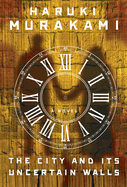
| Publisher: | Knopf | |
| Genre: | Magical Realism, Fantasy, Contemporary, Literary, Fiction | |
| ISBN: | 9780593801970 | |
| Pub Date: | November 2024 | |
| Price: | $35 |
| Starred | Fiction |
by Haruki Murakami, trans. by Philip Gabriel
With The City and Its Uncertain Walls (translated from the Japanese by Philip Gabriel), Haruki Murakami returns to a world first created more than 40 years ago in a novella of the same title. That walled city will also be familiar to fans of the author's Hard-Boiled Wonderland at the End of the World, but prior familiarity is not required to appreciate the mesmerizing new fiction from the gifted and enigmatic Murakami (First Person Singular; IQ84; Wind/Pinball).
Part One opens as the young narrator describes walking barefoot with his girlfriend at the edge of a shallow riverbed, addressing the girl directly: "At that time neither you nor I had names.... The two of us sat there, side by side, on the riverbank of a nameless world." All of Part One uses this second-person address, the girl a constant presence in the story even as the narrator describes the way she one day disappears, leaving him confused and bereft. He goes on to college, gets a job, and maintains a comfortable existence into middle age. But the memory of the girl and the high-walled city they imagined together haunts him until the day he finds himself outside the wall, giving the Gatekeeper permission to remove his shadow and wound his eyes, allowing him to enter the city to work as a Dream Reader.
The City and Its Uncertain Walls plays with questions of reality and its construction. A confident ambiguity infuses each of the three distinct yet connected sections of the novel, evoking an uncanny, dreamlike state. For those willing to engage the ambiguities, Murakami's latest will not disappoint. --Sara Beth West, freelance reviewer and librarian

| Publisher: | Soft Skull | |
| Genre: | Women, Psychological, Dystopian, Literary, Fiction | |
| ISBN: | 9781593767839 | |
| Pub Date: | November 2024 | |
| Price: | $16.95 |
| Starred | Fiction |
by Anna Moschovakis
Poet, novelist, and translator Anna Moschovakis unsettles readers of An Earthquake Is a Shaking of the Surface of the Earth, a narrative meditation on the obsessions one clings to in the face of chaos. In an uncanny near future, a seismic event has disrupted Earth's crust, leaving everyone to live through continuous earthquakes. While not all of them are large, they are nearly constant.
This catastrophic event is not the first thing to upend the novel's first-person narrator, however. Her lackluster career as an actress seems to have finally petered out. Facing the chasm of unfilled days on shaking ground, she develops an obsessive focus on her young, attractive housemate, Tala, which quickly sharpens into a desire to kill her. When Tala inexplicably disappears, the narrator spirals through her own existential dread, reliving memories of what it means to be a woman in a world that's always watching. Her hunt for Tala soon dissolves into a more hallucinatory hunt for stability in an increasingly unstable environment.
Reading Moschovakis's prose is a singular experience, not least of all because of its inherently poetic sensibility. Her lyrical turns of phrase, unexpected juxtapositions, and associative iterations are perfect for An Earthquake's narrator as she slips into the book's long, existential stare. The narrator's fixation on Tala appears disturbing at first and yet increasingly understandable. Shifts, of course, are not easy to live with. But they are, Moschovakis ultimately suggests, the only state of being one can depend on. --Alice Martin, freelance writer and editor

| Publisher: | Dutton | |
| Genre: | Women, Medieval, World Literature, France - General, Fiction, Historical | |
| ISBN: | 9780593475034 | |
| Pub Date: | November 2024 | |
| Price: | $29 |
| Fiction |
by Elizabeth DeLozier
A young woman in 14th-century Provence risks everything to cultivate her talents and serve her city in Eleanore of Avignon, the engrossing historical fiction debut of Elizabeth DeLozier.
Eleanore Blanchet learned to be an herbalist and a midwife from her mother, who, in turn, studied under her physician father. While gathering ingredients for her remedies, an accidental meeting with Guigo de Chauliac, physician to Pope Clement VI, brings Eleanore an opportunity: she will use her knowledge of herbalism to treat the pope's ailment, and de Chauliac will take her on as an apprentice. Then Queen Joanna of Naples, accused of murdering her husband, comes to Avignon for trial. The pregnant queen insists on having Eleanore for her midwife, but with plague ravaging the city, Eleanore and de Chauliac will need to muster everything they have to find a treatment.
DeLozier paints a vivid picture of life on the margins of a medieval city. Eleanore's mother, abandoned at the end of her life by those who thought her knowledge was evidence of witchcraft, stands as a sharp warning of what could happen to a woman who steps outside of her place--which is even more of a risk to an unmarried woman like Eleanore. The tension rises as the plague spreads throughout the city and religious fanatics gain power, threatening Eleanore and the Jewish colleagues of de Chauliac with whom they consult in search of a cure to protect those who could turn on them at any moment. The result is a gripping portrait of a woman's bravery in a city on the brink. --Kristen Allen-Vogel, information services librarian at Dayton Metro Library
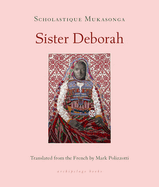
| Publisher: | Archipelago | |
| Genre: | Women, World Literature, Africa - East Africa, Political, Fiction | |
| ISBN: | 9781953861948 | |
| Pub Date: | October 2024 | |
| Price: | $19 |
| Fiction |
by Scholastique Mukasonga, trans. by Mark Polizzotti
Scholastique Mukasonga again sharply and profoundly explores the spiritual realm in Sister Deborah. She also reunites with Mark Polizzotti, who translated Kibogo, her 2022 National Book Award finalist. Mukasonga, a Rwandan refugee living in France since 1992, deftly layers her mystical narrative with the consequences of white occupation (Belgian, mostly, but also German and American), the clash between invasive Christianity and indigenous practices, and struggles for female autonomy.
Four chapters compose Mukasonga's slim novel, each presented with first-person agency. Three belong to Ikirezi, "a little peasant girl [who] became the great Professor Jewels." Ikirezi is a sickly child, taken by her mother--against her father's demands--"to the mission of the black padri," situated on a pagan ceremonial site, where Sister Deborah will know "what is best for her." Ikirezi recovers and proves herself an outstanding student, becoming an "eminent Africanist" with a Howard University doctorate. Convinced that Sister Deborah's "unknown mysterious power" enabled her, Ikirezi returns to Africa seeking her benefactor. Mukasonga reserves the third chapter for Sister Deborah herself: "Listen carefully," she warns Ikirezi, "and if one day you turn [my story] into one of your books, woe unto you if you leave out a single word."
At under 150 pages, Mukasonga doesn't need loquaciousness to achieve affecting density. Ikirezi and Sister Deborah's trajectories--Africa to America for the former; America to Africa for the latter--are superbly engaging stories, while their experiences also adroitly (never didactically) expose widespread disparities and inequities of race, gender, history, society, and religion. Mukasonga skillfully elevates her storytelling into enriched enlightenment. --Terry Hong

| Publisher: | Morrow | |
| Genre: | Women, General, Biographical, Fiction, Historical | |
| ISBN: | 9780063276215 | |
| Pub Date: | November 2024 | |
| Price: | $18.99 |
| Fiction |
by Hazel Gaynor, Heather Webb
In Christmas with the Queen, their fourth co-written historical novel, Hazel Gaynor and Heather Webb (Meet Me in Monaco) craft a charming love story alongside a sensitive portrait of a young Queen Elizabeth II finding her way as a monarch and a public speaker through her annual Christmas radio broadcasts.
London, December 1952: Olive Carter is toiling away at the BBC, hoping to graduate from puff pieces to reporting important stories. A colleague's illness gives her the unexpected chance to travel to Sandringham House and report on the royal family's Christmas activities. The last person Olive expects to see is Jack Devereux--Cajun chef, American transplant to London, and old friend--working in the kitchens there after his wife's death. As Olive pursues her story and even gains a miraculous audience with the queen, she and Jack circle tentatively around each other, both longing for a deeper connection.
In alternating first-person chapters, Gaynor and Webb give voice to Olive's struggles with sexism and raising her daughter, and Jack's dreams of opening his own restaurant in London. Occasional interludes from Queen Elizabeth II add nuance, showing the difficulties she experienced as she established herself as a respected leader while navigating marriage and motherhood. Olive's encounters with the queen give both women a boost, and the slow-burning love story simmers like Jack's Louisiana gumbo, gradually gaining depth and complexity. Readers will enjoy the festive touches promised by the title, but the novel's heart lies in its depiction of three people working hard to pursue their own separate (but intertwined) purposes in life. --Katie Noah Gibson, blogger at Cakes, Tea and Dreams

| Publisher: | Minotaur | |
| Genre: | Mystery & Detective, Traditional, Fiction | |
| ISBN: | 9781250328137 | |
| Pub Date: | October 2024 | |
| Price: | $30 |
| Mystery & Thriller |
by Louise Penny
Louise Penny (The Madness of Crowds; Kingdom of the Blind) makes a rousing return to Chief Inspector Armand Gamache of the Sûreté du Québec with The Grey Wolf, an intriguing novel that takes her perennial hero out of his comfort zone.
The usually unflappable Gamache has grown accustomed to dealing with the darker side of humanity via cases that pull him away from his quiet, charming village of Three Pines and its close-knit residents, many of whom are eccentrics. But The Grey Wolf pits Gamache against terrorists bent on international mayhem.
The plot begins innocuously with several phone calls that Gamache refuses to answer while relaxing in the back garden with his wife, Reine-Marie. Later, the couple's Montreal apartment is broken into. All that's missing is Gamache's summer jacket, which is returned to him at his office with two notes in its pockets, one of which requests a meeting. That meeting ends in violence, causing Gamache to further examine these odd circumstances, aided by his second-in-command and son-in-law, Jean-Guy Beauvoir, and Inspector Isabelle Lacoste. The investigation leads Gamache to a far-flung terrorist plot that may have ties to the White House and the Vatican.
Penny keeps tight control of her tense, elaborate plot, drawing out the suspense to the maximum effect in her 19th novel starring Gamache. Danger seeps throughout The Grey Wolf as Gamache begins to realize he can trust only his immediate team. Yet Penny also maintains the intimate, comforting feelings and flecks of humor, a signature of her series. --Oline H. Cogdill, freelance reviewer
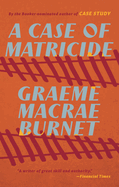
| Publisher: | Biblioasis | |
| Genre: | Psychological, Mystery & Detective, Literary, Thrillers, Fiction, Historical | |
| ISBN: | 9781771966474 | |
| Pub Date: | November 2024 | |
| Price: | $18.95 |
| Mystery & Thriller |
by Graeme Macrae Burnet
Following The Disappearance of Adèle Bedeau and The Accident on the A35, Scottish novelist Graeme Macrae Burnet (Case Study) returns with the distinguished final book in the Inspector Gorski trilogy, which is centered on a Frenchman with the job of Simenon's Maigret and the dimensionality of a Proust character.
One morning Chief Inspector Georges Gorski of the Saint-Louis Police is summoned by a hotelier who thinks there's something "fishy" about his only guest. That afternoon, Gorski visits the home of an elderly woman who's convinced that her son intends to murder her. Then there's the death of a wealthy industrialist, who appears to have had a heart attack but who, Gorski observes at the scene, has fallen backward in an "unnatural posture," as if he was pushed. Readers will conclude that these three bits of suspicious business are the building blocks of a crime novel; readers will be right and wrong.
Set in the early 1980s, A Case of Matricide features a satisfyingly fiendish incidence of comeuppance, but the punctilious Gorski's detective work plays a subordinate role in the narrative: he's consumed by, among other things, his floundering marriage and a childhood misdeed. The series' conceit is that it's "translated and introduced by" Burnet but authored by Raymond Brunet, a Saint-Louis writer who killed himself in 1992. Readers will likely be split on whether this meta framework is gratuitous or earned, but all should agree that the book is a filigreed character study with the feel of a slow-boil noir. --Nell Beram, author and freelance writer
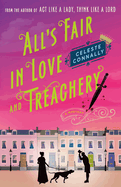
| Publisher: | Minotaur | |
| Genre: | Mystery & Detective, Fiction, Women Sleuths | |
| ISBN: | 9781250867605 | |
| Pub Date: | November 2024 | |
| Price: | $28 |
| Mystery & Thriller |
by Celeste Connally
Celeste Connally's witty second Regency-era mystery, All's Fair in Love and Treachery, follows Lady Petra Forsyth and her intrepid band of friends as they crisscross London trying to investigate a murder, find a missing girl, and foil a plot to throw England into chaos.
Though she is reeling from some stunning personal news, Petra is forced to put her emotions aside when Queen Charlotte asks her to discreetly investigate the death of a local orphanage matron, Mrs. Huxton. As she digs into the case, Petra discovers connections to the Bellowers, a group whose reformist tendencies may be veering toward anarchy--and which may be linked to both of the men she has loved. Connally (Act Like a Lady, Think Like a Lord) expertly weaves real-life political events (notably Napoleon Bonaparte's defeat at Waterloo) together with biting social commentary and a group of strong-minded women who refuse to sit back and let the men handle matters. Petra's Scottish lover, Duncan Shawcross, makes a welcome reappearance, as does Petra's whip-smart maid, Annie, alongside a handful of other characters from various social classes who aid Petra in her quest to track down Mrs. Huxton's killer. As London throws itself into wild revelry at the news of the Duke of Wellington's victory, Petra and her friends must unravel a web of deceit and stop a dangerous scheme from being carried out.
Clever, romantic, and filled with historical detail, Petra's second adventure provides a fascinating glimpse into Regency life and politics, and a highly satisfying romp through the streets of London. --Katie Noah Gibson, blogger at Cakes, Tea and Dreams

| Publisher: | Harper Voyager | |
| Genre: | Urban, Mystery & Detective, Fantasy, African American & Black, Paranormal, Fiction, Historical, Alternative History, Action & Adventure, Women Sleuths | |
| ISBN: | 9780063293595 | |
| Pub Date: | November 2024 | |
| Price: | $19.99 |
| Science Fiction & Fantasy |
by Nicole Glover
An aviatrix continues her family's legacy of magical investigation during Prohibition in The Improvisers, a thrilling stand-alone volume in the Murder and Magic series by Nicole Glover.
Velma Frye, pilot and former bootlegger, acts as an investigator for a magical rights group as part of her extensive travels across the United States. When she comes across an enchanted pocket watch that causes a brawl to break out at an air show, she goes home for advice; the Rhodes family has been wielding celestial magic and solving crimes since the Civil War, but this case is ultimately Velma's. When she discovers the watch is only one of many dangerous magical artifacts, she sets out across the country to track them down--accompanied, whether she likes it or not, by annoyingly persistent and charming reporter Dillon Harris.
Glover blends mystery and adventure while creating a vibrant cast of characters and expanding a narrative universe she first introduced in its mid-19th century into a new era. The intricate suspense as Velma tracks magical objects across the country and the ultimate confrontation over their theft evokes the classic thrillers of Alfred Hitchcock and Clue. Readers of Glover's novels starring Velma's grandparents (The Conductors; The Undertakers) will delight in seeing them again, but those starting fresh will also fall in love with the complex and brilliantly rendered extended Rhodes family. Fans of Maurice Broaddus, Alix E. Harrow, and the Loyal Leagueseries by Alyssa Cole should have their eye on Glover. --Kristen Allen-Vogel, information services librarian at Dayton Metro Library

| Publisher: | Berkley | |
| Genre: | Historical - Victorian, Romance, Fiction | |
| ISBN: | 9780593639276 | |
| Pub Date: | November 2024 | |
| Price: | $19 |
| Romance |
by Mimi Matthews
In The Muse of Maiden Lane, the final novel in her Belles of London quartet, historical romance author Mimi Matthews examines the effects of public perception on self-image--and weaves a love story shot through with starlight.
Despite her talents as an equestrian and artist, Stella Hobhouse has struggled to catch the eye of any eligible gentleman due to her prematurely gray hair, which renders her either invisible or, worse, the object of derision. But a chance meeting in the British Museum leaves Teddy Hayes, a painter who uses a wheelchair after a bad case of scarlet fever, utterly captivated by Stella. When the two reunite at a house party, Teddy becomes determined to convince Stella to pose for him. Stella, put off but also intrigued by the idea, agrees to sit for a sketch, and the two find themselves drawn to each other, even as they consider the complications of romance.
Matthews (The Lily of Ludgate Hill) sensitively renders Stella's and Teddy's inner lives as she explores the constraints on their freedom (Stella's societal, Teddy's physical) and the growing possibility that marriage might satisfy their desires for both liberty and love. Stella's three close friends, each featured in previous novels, provide support and the occasional push, and Matthews builds the romance as skillfully as Teddy layers the brushstrokes in his paintings. Balancing witty banter with historical detail and practical concerns about living with a disability, Matthews renders a romance that's both realistic and as luminous as the starlight--and the woman--Teddy loves. --Katie Noah Gibson, blogger at Cakes, Tea and Dreams
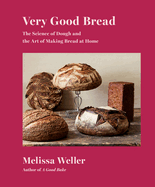
| Publisher: | Knopf | |
| Genre: | Cooking, Individual Chefs & Restaurants, Methods, Baking, Courses & Dishes, Bread | |
| ISBN: | 9780593320402 | |
| Pub Date: | November 2024 | |
| Price: | $40 |
| Food & Wine |
by Melissa Weller
Few experiences are more satisfying than biting into well-baked bread, be it sourdough, baguette, bagel, or any untold number of other shapes, sizes, textures, and flavor profiles. Baker and James Beard Award nominee Melissa Weller (A Good Bake) has spared no instruction or detail for readers to craft their own in Very Good Bread: The Science of Dough and the Art of Making Bread at Home. A former chemical engineer, Weller stresses the role that exactitude plays in baking. The sourdough baguette recipe is made over a period of four days, for example, and she advocates planning the time frame for each project.
Weller's career has featured stints at prominent restaurants in New York and California, and her encyclopedic knowledge is on full display throughout this beautifully photographed book, an essential resource for novice and experienced bakers alike. She advises which ingredients are preferrable (for example, salted or unsalted butter), whether it's better to weigh or measure ingredients, and how autolyse can contribute to a better crumb.
Every step, including preparation, seasoning, serving, and clean up, is covered thoroughly and accessibly in a way that makes failure seem impossible--or at least decidedly unlikely. Once a particular bake has been successfully achieved, readers can make use of appetizing complementary recipes, such as lamb meatballs with yogurt and pickled onions, and pulled pork tacos with salsa ranchera. Very Good Bread is sure to delight bakers and those lucky enough to sample their wares. --Elizabeth DeNoma, executive editor, DeNoma Literary Services, Seattle, Wash.
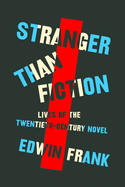
| Publisher: | Farrar, Straus and Giroux | |
| Genre: | Comparative Literature, Literary Criticism, Novel as Form, 20th Century - General, History, Modern | |
| ISBN: | 9780374270964 | |
| Pub Date: | November 2024 | |
| Price: | $33 |
| History |
by Edwin Frank
In Stranger Than Fiction: Lives of the Twentieth-Century Novel, Edwin Frank tackles an ambitious project that's ideally suited to his service as the longtime editorial director of New York Review Books and founder of the NYRB Classics series. This admittedly personal selection features some 30 novels, with ones from giants like Mann, Joyce, and Woolf alongside less commonly cited writers, like Natsume Sōseki (Kokoro), Italo Svevo (Confessions of Zeno), and Anna Banti (Artemisia). Frank explores the literature of a century that saw "an art form of extraordinary amplitude put under unprecedented ongoing stress," and how the novelists who labored during that time "respond to that stress by radically reshaping the novel as a literary form."
Frank proceeds in roughly chronological fashion, spanning the century from the publication of H.G. Wells's The Island of Dr. Moreau in 1896 to 2001, when W.G. Sebald's Austerlitz appeared. His analyses follow a consistent format, offering meaningful plot summary, ample quotation, and biographical material that helps situate the work in the writer's life and times.
Frank's own style is lively and accessible. Stranger Than Fiction will be more meaningful to readers who possess at least some familiarity with the novels he discusses, but it should inspire others to sample these books. While certain of his selections are undebatable, as in any such volume the inevitable omissions undoubtedly will spark controversy. In response to those anticipated objections, Frank has appended a list of some 80 novels for further exploration of his themes. Readers who approach this book with curiosity and an open mind will broaden their literary education in a demonstrable and enjoyable fashion. --Harvey Freedenberg, freelance reviewer

| Publisher: | University of California Press | |
| Genre: | Women, 17th Century, Gender Studies, Healing, Medical, History, Social Science, Modern | |
| ISBN: | 9780520409910 | |
| Pub Date: | November 2024 | |
| Price: | $28.95 |
| History |
by Karen Bloom Gevirtz
In The Apothecary's Wife, Karen Bloom Gevirtz recounts the engrossing history of how norms in medical care changed during the 17th and 18th centuries. In those days, it was rare to receive treatment from men; instead, medicine was performed by women, using methods passed down through generations and shared with anybody in need. Medicine wasn't paid for, except perhaps with a cutting of a new plant for the kitchen garden or a particularly nice apple. Instead, medical care was freely given by women in a community, no matter how high-born. Even a countess was expected to have a book of recipes that included medicine, since it was her duty to care for all those in the household and properties.
A professor of English specializing in gender studies and medical humanities, Gevirtz writes skillfully and academically about notable figures in medicine, describing how the fields of alchemy and medicine combined and how "European imperialism was vital to efforts to assign medication and physic gardens to men." Once medicine began requiring more than a household kitchen, garden, and gathering skills to prepare, men began to charge for it and to disparage the medical work of women (though this work was often the basis for new cures, many of which are still used today, such as willow bark, which was used to develop aspirin).
Gevirtz chooses to not modernize the spelling and language of the sources she employs, and her portrayals of the heated disagreements between practitioners of the day are delightful. Concluding with a look at the modern medical system in the U.S., The Apothecary's Wife is an endlessly fascinating work. --Alyssa Parssinen, freelance reviewer and former bookseller
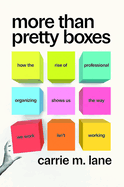
| Publisher: | University of Chicago Press | |
| Genre: | Human Resources & Personnel Management, Sociology, Business & Economics, Women's Studies, Social Science, Social Theory | |
| ISBN: | 9780226832777 | |
| Pub Date: | November 2024 | |
| Price: | $27.50 |
| Social Science |
by Carrie M. Lane
More Than Pretty Boxes by Carrie M. Lane examines with great care and compassion the origins and history of the field of professional organizing while ruminating on what the profession says about work and consumption in the United States.
Lane includes numerous anecdotes from her decade researching this project. As she accompanies organizers who clean up a cluttered art studio and clear out storage units left behind by deceased parents, readers learn about the daily lives of those in the organizing profession and develop empathy for people who choose to hire organizers. Along the way, she poses questions: How do Americans actually consume and work? Are they thriving in their work/life culture, or are they buying more and more items to feel something other than professional pressures? How do the demands of employment coexist with the demands of having a family? Ultimately, Lane answers these questions with the need for a more robust support system for families.
While helping clients to unearth themselves from beneath mounds of consumer goods, professional organizers also must contend with the reasons those mounds exist, directing clients to therapy as needed and reevaluating consumer culture. Lane skillfully weaves these threads together to make readers consider their own relationships with their stuff and their vocations.
Perfect for readers interested in reconsidering the American mantra of "work, work, work so we can buy, buy, buy," More Than Pretty Boxes is indeed more than an assessment of the professional organizing field; it is a reflective look at the objects that accumulate and why they do. --Alyssa Parssinen, freelance reviewer and former bookseller
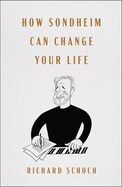
| Publisher: | Atria | |
| Genre: | Self-Help, Drama, Musicals, Literary Criticism, Music, Genres & Styles, Motivational & Inspirational | |
| ISBN: | 9781668030592 | |
| Pub Date: | November 2024 | |
| Price: | $28.99 |
| Starred | Essays & Criticism |
by Richard Schoch
Some have claimed, with good reason, that Broadway composer and lyricist Stephen Sondheim, who died in 2021, is America's Shakespeare, a person who didn't invent his art form so much as take it to a new level. Richard Schoch, a U.S.-born historian and Shakespeare scholar at Queen's University Belfast in Ireland, no doubt agrees. In How Sondheim Can Change Your Life, a book as delightful as its title, he argues that tributes to Sondheim didn't address a key question: "What do his music and lyrics bring into focus?" To fill this void, he has written a book that is "not so much about Stephen Sondheim as about what we can learn from him" and is designed to prove that "Sondheim's works can change your life."
Whether these engaging essays on 13 of Sondheim's musicals, from 1959's Gypsy to 2023's posthumous Here We Are, constitute useful lessons or are just a lot of fun will be up to each reader. But they're undeniably fun. Schoch distills each work to what he believes is its instructive essence. Company, he writes, demonstrates that "loneliness is not a personal defect, not a weakness of character, and certainly not anything to hide or to feel embarrassed about." Follies, "a story about middle-aged people stuck in the past," is about learning "to accept with a good grace what the years have made of us." And so on. Attend the text of Richard Schoch, for he knows his stuff and makes his points with enviable panache. Sondheim fans will love it. --Michael Magras, freelance book reviewer
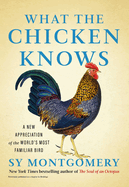
| Publisher: | Atria | |
| Genre: | Nature, Life Sciences, Technology & Engineering, Animals, Zoology - Entomology, Science, Animal Husbandry, Birds, Agriculture, Birdwatching Guides | |
| ISBN: | 9781668047361 | |
| Pub Date: | November 2024 | |
| Price: | $22.99 |
| Nature & Environment |
by Sy Montgomery
With What the Chicken Knows, bestselling nonfiction writer Sy Montgomery (The Hummingbirds' Gift; The Soul of an Octopus) gives readers a warm, intimate view of chickens through her own experience of falling in love with, raising, and learning about her flock.
When Montgomery and her husband, Howard, bought a 150-year-old New Hampshire farmhouse, their neighbor Gretchen Morin gave them their first dozen chicks "as a barn-warming present." Through research inspired by her close-up observations, Montgomery explains the true meaning of "pecking order" and the ramifications of introducing roosters into her flock of hens. When Montgomery rents to a tenant she fondly calls "the Chicken Whisperer," who brings her own flock (dubbed "the Rangers") with her, she experiences the challenges of housing a second flock. Though the additional flock had been part of the arrangement, the problems caused by two flocks sharing the same land were a surprise.
Quirky, amusing details--the chickens' affection for Christopher Hogwood, Montgomery's pig, who lived in a pen next to the coop for more than a decade, as well as next-door neighbors Bobbie and Jarvis Coffin, whom the birds often hopped across the fence to visit--share space with scientific revelations, such as how to calm a rooster, and the facts that chicks can peck and walk mere hours after leaving their egg and chickens can run up to nine miles per hour. Adapted and revised from a chapter of her 2010 book, Birdology, Montgomery's account of her limitless devotion for her feathered friends is contagious, and its nifty 5x7 trim size makes it an ideal gift. --Jennifer M. Brown, reviewer

| Publisher: | New York Review Books | |
| Genre: | Photography, Biography & Autobiography, Art, Individual Artists, Artists, Architects, Photographers, Literary Collections, Individual Photographers, Essays | |
| ISBN: | 9781681378633 | |
| Pub Date: | October 2024 | |
| Price: | $18.95 |
| Art & Photography |
by Benjamin Swett
Benjamin Swett (Trees of New York City) chronicles events in his childhood and adult life that have ushered him to photograph, write, and ponder the significance of moments left uncaptured. Through the eight essays that compose The Picture Not Taken, Swett incorporates anecdotes about his family history, the natural world, and racial politics, as well as dozens of black-and-white photographs. Skillfully placed within the text, the images enhance and explain Swett's celebration and critique of life and art.
Photography serves as the collection's central subject. "A photograph, when it is taken, represents a moment of intense and sudden love and insight for something visible in the world--for the world itself, or for life, or for one's own self; a moment of connection that momentarily dissolves the barriers between the photographer and the things around him, outside him." Swett thoughtfully connects his visual art with equally stunning prose, writing of growing up, raising children, and losing loved ones, and of photography. "Visits to Coney Island, a trip to the Central Park Zoo, kite-flying in Prospect Park were doubly significant occasions first through our father's recording of them, and then through the prints he made." Swett's professional knowledge of cameras and photographs intertwines with vulnerable accounts of immense love and heartbreaking grief.
As his artfully curated essays describe recollections from New York to New Zealand, Swett begins by focusing on his father's love of photography and ends by discussing his own love for the same craft. Wholly rooted in the personal, the deeply thought-provoking The Picture Not Taken is a creative combination of memoir and art. --Clara Newton, freelance reviewer

| Publisher: | Random House | |
| Genre: | American, General, Family, Poetry, Subjects & Themes, Animals & Nature | |
| ISBN: | 9780593731024 | |
| Pub Date: | November 2024 | |
| Price: | $27 |
| Poetry |
by Billy Collins
In Water, Water, a collection of new poems, former U.S. Poet Laureate Billy Collins applies his signature wit and whimsy to everyday situations: waiting at the doctor's office, playing cards on a winter's night, reading the guest book at a lakeside cottage. In examining these ordinary moments (sometimes minutely), Collins holds them up to the light, revealing facets both absurd and beautiful: the exquisite torture (to some) of an all-violin jazz band; the "rough armadillo plates" of a pineapple; or the way that joy, personified, seems "down to earth,/ like a girl getting off a bus with a suitcase."
Throughout his career, Collins (Aimless Love; Whale Day; Sailing Alone Around the Room) has explored the beauties, amusements, and pathos of ordinary life: his poems are often about small things, at least on the surface. But his sly genius lies in turning the commonplace at an angle, allowing readers to appreciate their hidden depths. A solitary breakfast after an argument becomes a meditation on not only the history of art, but complex stories of the people portrayed in famous paintings; a reflection on illuminated medieval manuscripts leads the poet to contemplate the benefits of modernity, including his car and his wife (both beloved).
Although Collins frequently waxes philosophical, musing on constellations, ancient deities, and the very nature of existence, his poetry is at its best when capturing a particular shade of memory--fleeting, unexpected, luminous with meaning--like the one in "Daydream," when a blaze of multicolored azaleas reminds the poet of a stolen moment with the neighbor's "tall daughter/ whose hand you once held in the dark." --Katie Noah Gibson, blogger at Cakes, Tea and Dreams

| Publisher: | Texas Review Press | |
| Genre: | Biography & Autobiography, Women, Women Authors, American, Love & Erotica, General, Family, Poetry, Subjects & Themes | |
| ISBN: | 9781680033557 | |
| Pub Date: | November 2024 | |
| Price: | $21.95 |
| Poetry |
by Elizabeth Burk
Elizabeth Burk's Unmoored traces the arc of an adventurous life defined by wanderlust and fresh beginnings. Burk's fourth poetry collection finds the native New Yorker nurturing new roots in Louisiana and calibrating the roles she inhabits as she transitions from city native and ex-wife to rural transplant, new bride, and grieving sister.
There is a sensory brilliance to Burk's recollections of childhood, such as the games played until sundown and a brush with Catholicism that alarmed her Jewish immigrant father. In "Catechism," she recounts a short-lived fascination with the ritual of confession, while her family's apathy toward religion laps at the edges of her words. "Gardening in the Dark" finds Burk (Learning to Love Louisiana) wondering where she and her sister, both "skeptical souls," will meet after death.
The comfort and consolation of precious sisterly memories in "Carapace" is preceded by "Sex After Seventy-Nine," in which memory loss is treated with disarming humor. "By the time/ we both arrive in the bedroom// let's hope we recall why/ we are there and what appendages// go where," Burk writes. Remembrances are bittersweet in "Phantom Child," as Burk pays tribute to the blissful union with a Spanish sculptor with whom she "conceived the child/ [she] later tore from [her] womb."
The sheer vastness of Burk's subjects, including hormone replacement therapy, "pre-coital// naps," and her decision to remarry, will delight readers. In a fitting coda to a peripatetic life, Burk trains her poetic gaze in the final poem on "those looming, late-blooming years" as they "creep and sprint" toward the finish line. --Shahina Piyarali
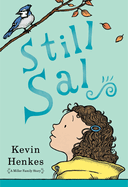
| Publisher: | Greenwillow Books | |
| Genre: | Humorous Stories, School & Education, Social Themes, New Experience, Self-Esteem & Self-Reliance, Juvenile Fiction | |
| ISBN: | 9780063389625 | |
| Pub Date: | October 2024 | |
| Price: | $18.99 |
| Starred | Children's & Young Adult |
by Kevin Henkes
The mismatch of expectation and reality can be a hard lesson to learn in first grade. Still Sal is Caldecott Medalist and Newbery Honor author Kevin Henkes's wonderfully warm and authentic novel for newly independent readers. Sal navigates the surprises and disappointments of school with a typical six-year-old's jumble of optimism, anxiety, secrecy, and craftiness.
Sal's visions for first grade are filled with glittery pencils, notebooks printed with baby animals, and her best friend, Griff. The reality is dismayingly different. Her misguided efforts to fix the problem of being in what she considers the wrong classroom only create more stress and keep her from realizing that she might be in the "right place" after all.
Still Sal is a stand-alone companion to Henkes's The Year of Billy Miller, along with Billy Miller Makes a Wish and Oh, Sal. Henkes has a remarkable knack for entering the small but important world of a child and thoughtfully representing the highs and lows and genuine confusion that one tends to forget as an adult. Henkes deftly avoids the pitfall of turning Sal into a precious caricature; she, like most kids, doesn't want adults to think she's cute. She wants her serious feelings of awkwardness, guilt, joy, and the painfully familiar blend of anger and sadness to be taken seriously. Her friends and family offer love, humor, understanding, and occasional obliviousness. Still Sal, with its spunky, determined, funny, and unsentimental protagonist and focus on family, friendship, identity, resilience, and growth, should find a perfect spot on the bookshelf right next to Beezus and Ramona. --Emilie Coulter, freelance writer and editor
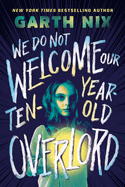
| Publisher: | Scholastic Press | |
| Genre: | Family, United States - 20th Century, Alien Contact, Juvenile Fiction, Historical, Science Fiction, Siblings | |
| ISBN: | 9781339012209 | |
| Pub Date: | October 2024 | |
| Price: | $18.99 |
| Starred | Children's & Young Adult |
by Garth Nix
Garth Nix's We Do Not Welcome Our Ten-Year-Old Overlord is perfectly crafted, highly believable, middle-grade science fiction in which a boy's 10-year-old sister finds an alien object capable of mind control in "an alternate version" of 1975 Canberra, Australia.
Most evenings, 12-year-old Kim and his best friend, Bennie, along with younger sisters Eila and Madir, ride bikes to the lake. One night, after the sun disappears "for a fraction of a second," Eila wades into the water and pulls out a perfectly round, golden globe covered in mud. Kim tries to wrestle the object away from Eila, but he's zapped by the "horrible sensation that something was entering his brain." Kim resists and breaks free, but Eila, bossy and "super, super smart," pronounces the object to be a friend, and Madir worshipfully agrees it's "perfectly safe." Although Kim can't stop worrying about the globe, Eila assures him Aster--"she is a person, not a 'globe thing' "--will listen to her and "can help." When a "thin, perfectly circular layer of cloud" appears directly above the city, Bennie's parents start getting along, and a sick neighbor is healed, Eila finally admits to Kim that Aster is interfering with minds.
Nix (The Lefthanded Booksellers of London) brings his consummate skill with speculative fiction to this captivating piece of alternate history. The ever-increasing tension should keep readers mesmerized, as they struggle with the question at the heart of this clever book: whether mind control is ever okay, even if it brings about "good" changes. --Lynn Becker, reviewer, blogger, and children's book author

| Publisher: | Scribble US | |
| Genre: | Values & Virtues, Cooking & Food, Humorous Stories, Asia, Family, Social Themes, Juvenile Fiction, Siblings, Places | |
| ISBN: | 9781957363851 | |
| Pub Date: | October 2024 | |
| Price: | $19.95 |
| Starred | Children's & Young Adult |
by Kim Hyo-Eun, trans. by Deborah Smith
Kim Hyo-eun's delicious How We Share Cake, her second Korean import after the award-winning I Am the Subway (also translated by British polyglot Deborah Smith), focuses on the pursuit of familial fairness. "We are three sisters and two brothers," begins the second sister, serving as judicious narrator. "This is a story about how we share cake... and everything else."
For every item--apples, milk, roast chicken--five-way division is a must. "Sometimes, sharing is easy," because who wants broccoli? "Other times, it's hard"--because cotton candy! Each sibling has preferred implements to claim his/her share: a spatula, a fork, or an oversized ladle to grab every drop. Uncle-sharing, too, is mandatory, especially when he visits with his scooter. Twenty-four minutes is the max ride time allotted per child, until second sister's crash lands her in the hospital. The children, despite their worry, quickly calculate their longer scooter access (30 minutes). Meanwhile, second sister basks--temporarily--in being the one and only, enjoying a snack just for herself, then choosing a birthday cake of her very own.
Kim (who also had to "share everything" in her youth) charmingly recounts here the sibling negotiations necessary to maintain family peace. Her stylized pencil, watercolor, and collage illustrations--outlined in black and white, strategically enhanced with detailed colors and patterns--are reminiscent of comic panels with their generous use of white space, whimsy, and humor. She most often depicts the quintet as crowded together--a squished-in car ride, the malodorous single bathroom--because, with family, sharing is indeed caring. --Terry Hong

| Publisher: | Christy Ottaviano Books | |
| Genre: | Friendship, Values & Virtues, Animals, Humorous Stories, Dragons, Unicorns & Mythical, Social Themes, Juvenile Fiction, Action & Adventure | |
| ISBN: | 9780316564526 | |
| Pub Date: | October 2024 | |
| Price: | $18.99 |
| Children's & Young Adult |
by Christopher Denise
Readers who loved Christopher Denise's Caldecott Honor title, Knight Owl, will be thrilled to know that the titular pint-size hero is back--and he's got company.
In the first book, Owl saw his wish to join the Knight Night Watch become a reality, and he used his courage and wit to outsmart a dragon. Owl faces an even more formidable foe in this follow-up: Early Bird, his "BIGGEST fan." Early Bird wants to be a Knight Owl, but Owl's nocturnal schedule proves an immediate obstacle. When Early Bird is ready to start her day, Owl is ready for bed, and when it's time to patrol the castle at night, Early Bird can't stay awake. Tension between the two grows and Owl tells Early Bird, "PLEASE GO AWAY!" She does. For entirely too long. Owl, worried about Early Bird, sets off into the dark, cold forest to find her and stumbles onto something much worse.
Young readers with little siblings will recognize Early Bird's personality immediately, and Denise finds plenty of humor in her character. The text of much of her dialogue is styled in varying sizes, a clever visualization of the "great deal of noise" she makes. As he did in Knight Owl, Denise skillfully employs a palette of warm golds and deep, occasionally chilling blues. He expertly alternates between charming vignettes, single-page illustrations framed by generous white space, and cinematic, full-bleed spreads. It's difficult to live up to Knight Owl's near perfection--the third act's pacing here is rushed and the book's focus is somewhat divided--but most readers will be too busy giggling and cheering to notice. --Stephanie Appell

| Publisher: | HarperAlley | |
| Genre: | Fantasy & Magic, Death, Grief, Bereavement, Social Themes, Juvenile Fiction, Action & Adventure | |
| ISBN: | 9780063277168 | |
| Pub Date: | October 2024 | |
| Price: | $19.99 |
| Children's & Young Adult |
by Daniel Nayeri, illust. by Matt Rockefeller
A grieving child embarks on an action-packed adventure in the enigmatic, palindromic picture book Drawn Onward, written by Printz Award-winner Daniel Nayeri (Everything Sad Is Untrue). The lush, intricately detailed illustrations by Matt Rockefeller (Poesy the Monster Slayer illustrator) use visual pacing and a videogame-like structure to invite close inspection and expand Nayeri's narrative in multilayered ways.
The story opens with the child and a bearded, bespectacled adult sitting in sorrow beneath a painting of a happy family: "She was gone," the text reads. In tears, the child escapes to the forest and pulls a sword from the ground. The fearful but determined child faces great dangers in the mostly wordless adventure that follows. Midway through the story, the bereaved child asks a statuesque stand-in for his now-dead mother a yearning question ("Mom were you glad you were Mom?")--and receives a reassuring response. As the child returns home, Nayeri's spare text repeats itself (with slight changes), bringing new meaning to the words and beautiful new adventures for the child who no longer believes "she was gone."
Rockefeller balances his palette between sun-dappled earth tones and jewel colors, incorporating glowing gems and iridescent flying creatures as integral elements of the story. The journey takes place in one day, Rockefeller launching it with an image of the family cottage on a sunlit morning and closing the story with the cottage at night, a crescent moon shining brightly. The reunion of the child with both the deceased mother and the parent waiting at home offers comfort, likely leaving readers eager to return to the beginning to revisit the story's many subtextual and emotional layers. --Julie Danielson